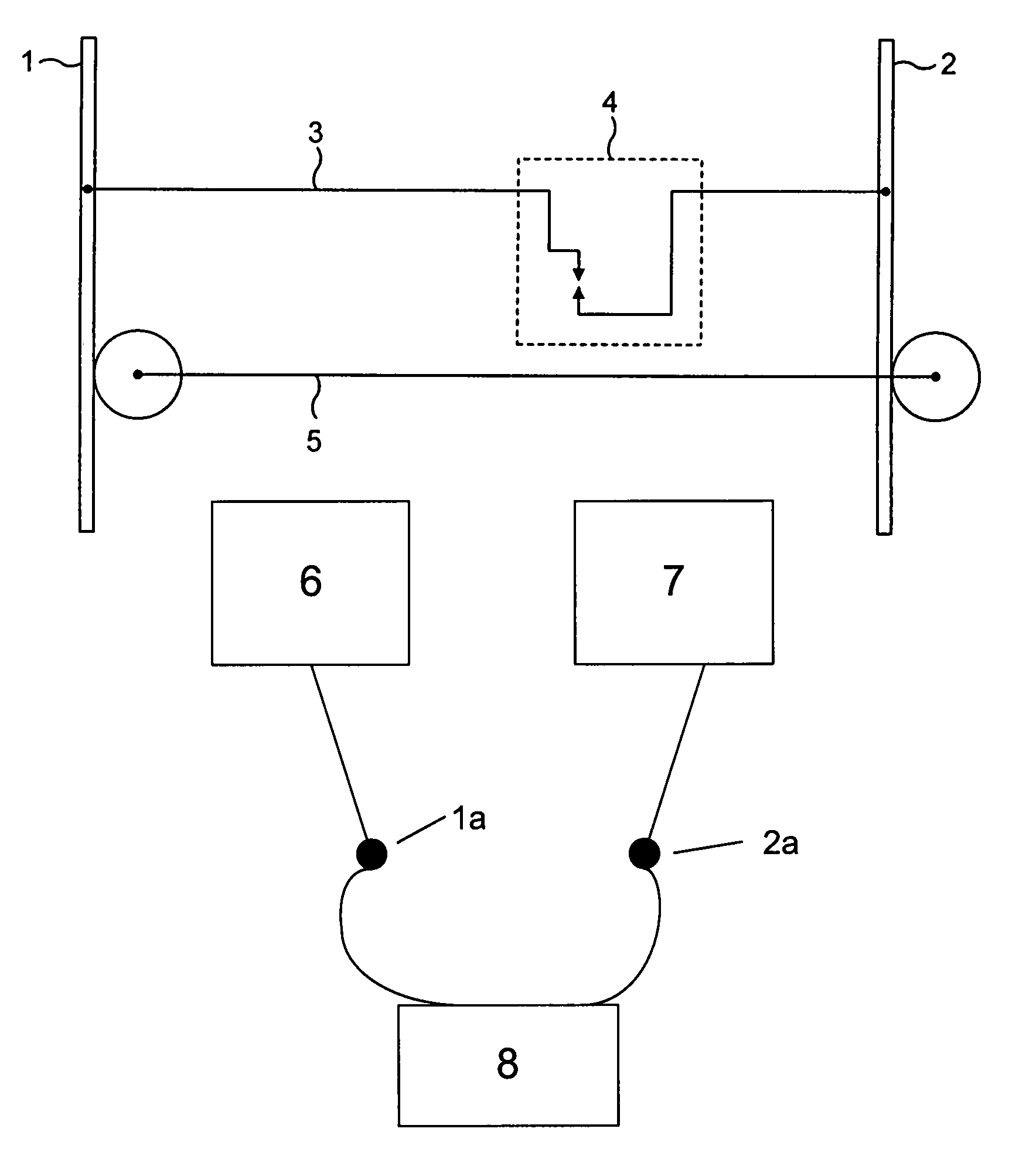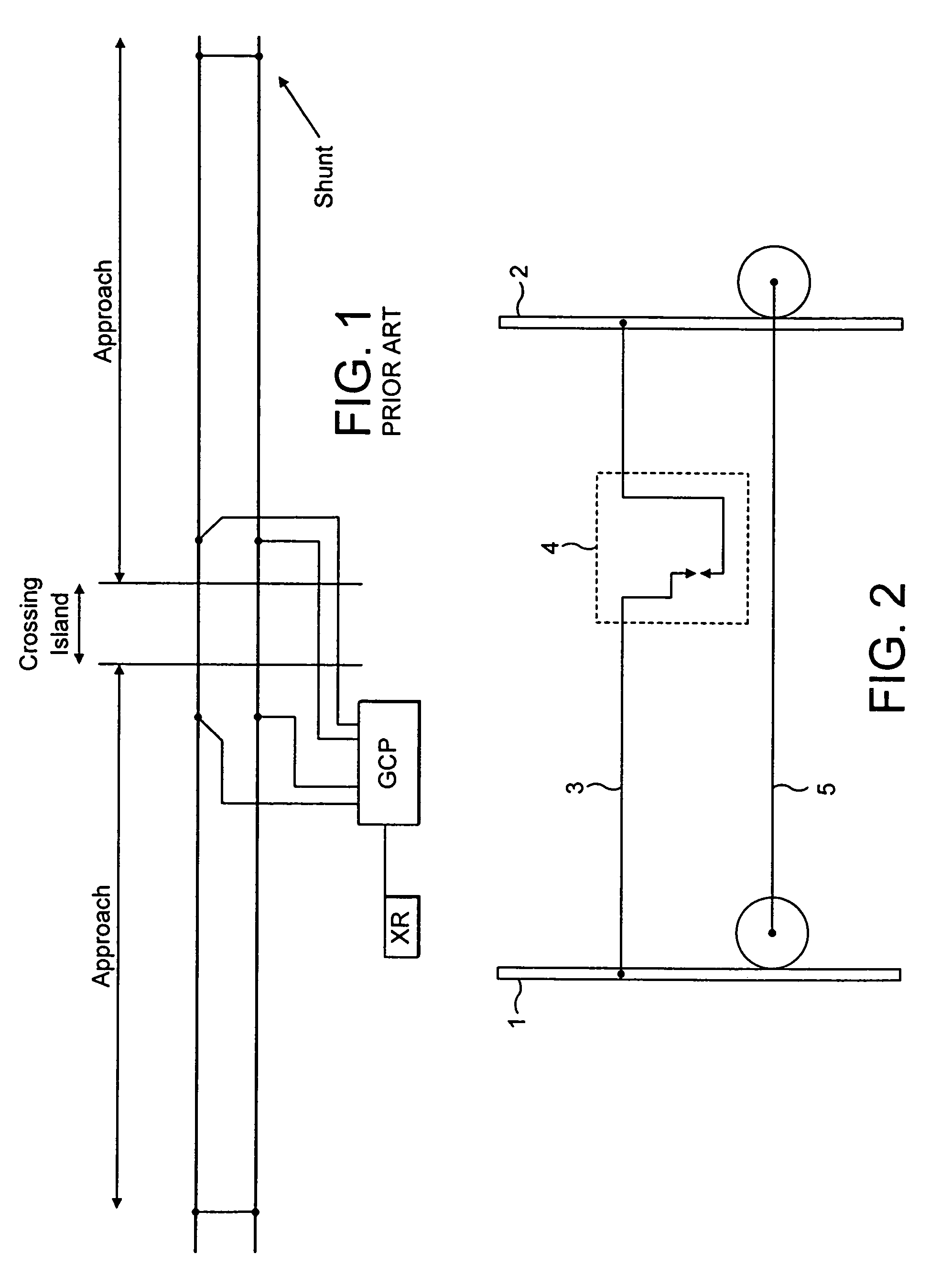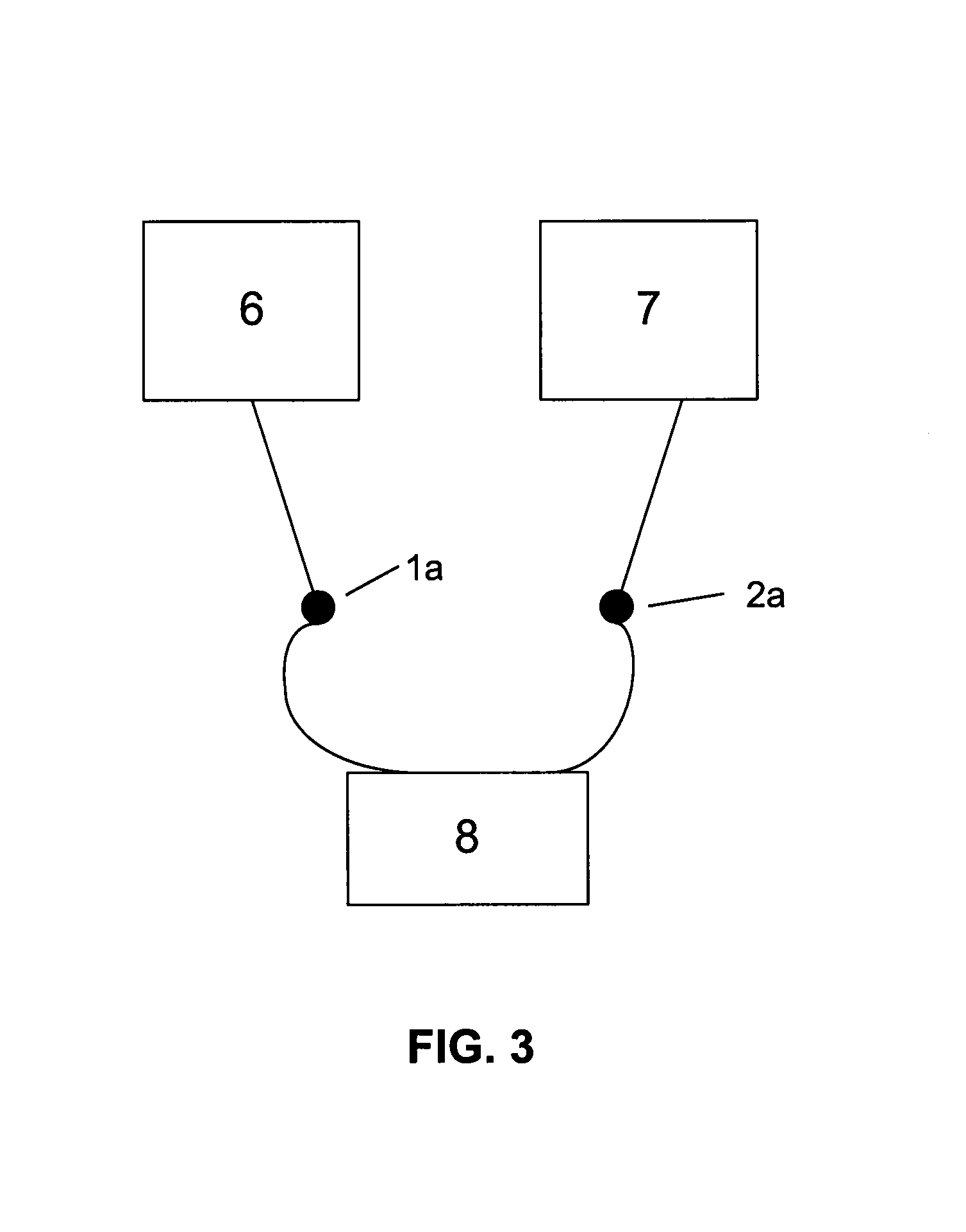Train detection
a technology of detection mechanism and train, which is applied in the direction of railway signalling, railway components, transportation and packaging, etc., can solve the problem of too high resistance of the wheel to the rail interface to achieve activation
- Summary
- Abstract
- Description
- Claims
- Application Information
AI Technical Summary
Benefits of technology
Problems solved by technology
Method used
Image
Examples
Embodiment Construction
[0031]With reference now to FIG. 2, a shunt arrangement is shown for a train detection mechanism in accordance with the present invention, and to FIG. 3, which shows a relationship between various components including current injection means 6, current receiving means 7 and impedance measuring means 8, and the first ends 1a,2a of rails 1,2, respectively. FIG. 2 shows a portion of first and second rails 1 and 2 in the vicinity of the distal end of the track circuit from the current injection means 6. The rails 1, 2 are electrically connected by a termination shunt 3. In an advance on the prior art, the shunt 3 includes a switch 4, such as a treadle, connected in series with the shunt 3. The switch 4 is normally closed in its default state in the absence of the passage of the train. When the switch is closed, current can flow from the injection means, along rail 1, through shunt 3 and back along rail 2 to current receiving means 7. Of course, the current used will usually be a.c. and ...
PUM
 Login to View More
Login to View More Abstract
Description
Claims
Application Information
 Login to View More
Login to View More - R&D
- Intellectual Property
- Life Sciences
- Materials
- Tech Scout
- Unparalleled Data Quality
- Higher Quality Content
- 60% Fewer Hallucinations
Browse by: Latest US Patents, China's latest patents, Technical Efficacy Thesaurus, Application Domain, Technology Topic, Popular Technical Reports.
© 2025 PatSnap. All rights reserved.Legal|Privacy policy|Modern Slavery Act Transparency Statement|Sitemap|About US| Contact US: help@patsnap.com



